Hydrangea "Kiushu": description, recommendations for cultivation and reproduction
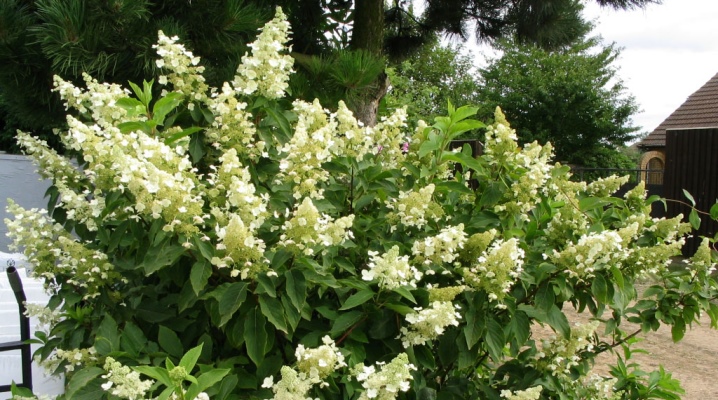
Hydrangea "Kiushu" is a deciduous shrub, its homeland is the Far East, Japan, China. The culture is appreciated by gardeners for its unpretentiousness and decorative appearance.
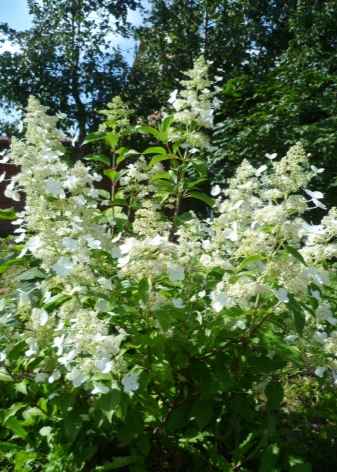
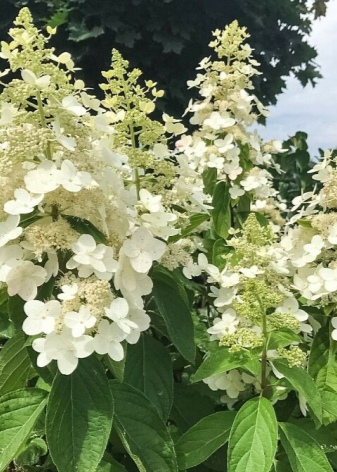
Characteristic
Panicle hydrangea "Kiushu" looks great both alone and in group plantings. Powerful, frost-resistant branches of the plant are suitable for creating a hedge - it serves as protection from wind and dust, at the same time being an excellent background for garden plants. The culture is highly resistant to frost and disease.
To choose the right plant, you need to know the description of the variety. Hydrangea paniculata is an ornamental shrub 2-3 m high. Leaves are cordate, with a pointed tip and a toothed edge; the top is dark green, glossy, the bottom is lighter by 1-2 tones, up to 12 cm long. Inflorescences are dense-haired panicles 30-35 cm in length, have a pyramidal shape. Flowers 10-12 cm in diameter, with rapidly falling petals. The fruit is a capsule up to 3 mm in length, with many small seeds. The first flowering after planting is in 3-4 years.

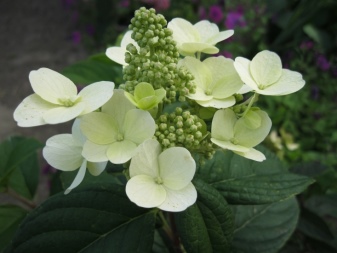
Flowering time of the variety: from mid-summer to late autumn.
During blooming, the buds are creamy white, in full bloom - white, in autumn - pink, with green and blue tints.
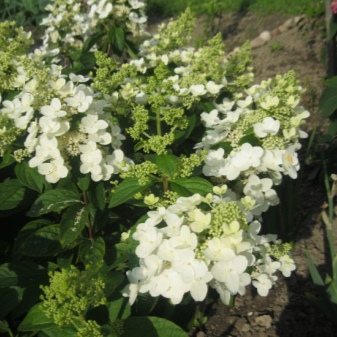

Landing
To avoid unpleasant surprises, it is better to purchase planting material in specialized stores. The seedling should look strong and have at least three main branches. The roots of a healthy plant should be free of mold and rot. If the seedling is purchased in advance, it is recommended to buy it in a closed-root container and store it at home in a cool, dark place until spring arrives.
Seat selection
The choice of a place for seedlings of panicle hydrangea must be approached with special care, since it does not tolerate transplants well, and it is necessary to immediately determine a permanent place for it. Being under the sun's rays all day, the bush inflorescences gradually lose their splendor and become small. Hydrangea is not “friendly” with the wind, its gusts cut off delicate flower petals, and the shrub loses its decorative effect. Partial shade and a site protected from the wind is the best planting option for a hydrangea seedling.

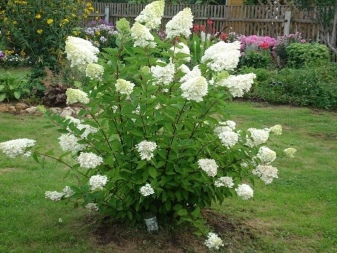
The soil
Hydrangea "Kiushu" is a moisture-loving plant, therefore, loose, structured soils with good water permeability are suitable for its development. The roots of the shrub need an acidic environment, for this reason, lime is not added to the planting hole and is not poured under the bush in the future.
Planting of panicle hydrangea seedlings is carried out in May after the end of night frosts. Examine the planting material for mold and rot, shorten the roots that are too long. In areas with dense clay soil, planting pits are made deep, up to 60 cm deep, filling them with an artificially created mixture, which includes:
- river sand;
- turf;
- peat;
- humus;
- rubble or brick fight.
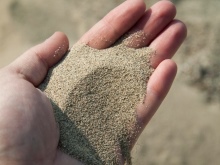
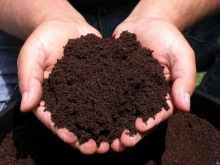
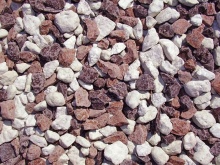
Everything is cooked in equal proportions (without adding lime), mixed and poured into the planting pits.
In areas with loose fertile soil, plants are planted in shallow pits without a nutrient mixture. The pits are made with an extension upward, since the root system of the panicle hydrangea does not grow in depth, but in width.
The planting material is placed in a pit, the roots are straightened, covered with earth, spilled with water, mulched (to slow down the evaporation of moisture) and lightly tamped.


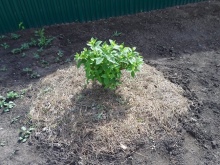
Follow-up care
The content of culture includes a number of activities.
Watering
Panicle hydrangea is a very moisture-loving plant that requires abundant watering in the spring, at the beginning of growth and during the period of bud formation. The land needs to be soaked 10-15 cm deep, spraying with clean, warm water and artificial sprinkling are useful. Excess moisture is no less harmful to the plant; the access of oxygen to the roots decreases, nutrients are washed out, there is a threat of death of the shrub due to rotting of the root system.
It is not recommended to water the hydrangea with a hose. It is best suited for this purpose rain or tap water, settled in containers. Watering the plant should be done early in the morning or late in the evening, as direct sunlight quickly dries out the soil, forming a crust that prevents oxygen from reaching the roots. The topsoil should be kept loose.
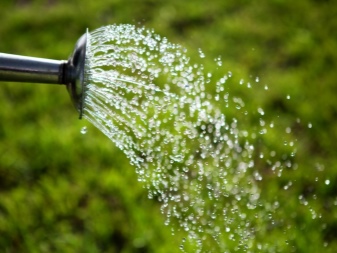
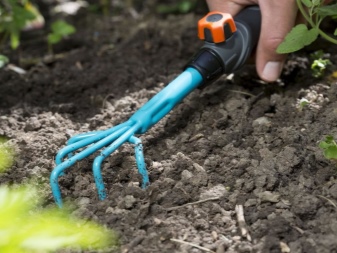
Top dressing
For hydrangea "Kyushu" 4 dressings are required per season:
- in spring, from the beginning of sap flow - 25-30 g of urea, 25-35 g of superphosphate, 35-40 g of potassium sulfate per 1 square meter of soil;
- during the ripening of buds - 40-50 g of potassium sulfate, 70-80 g of superphosphate;
- at the beginning or in the middle of September - 60-70 g of potassium sulfate, 40-50 g of superphosphate;
- in mid-October - 20 kg of humus or leafy soil under a bush.
Pruning
Pruning of panicle hydrangea is carried out in early spring, before the start of sap flow. For work, it is better to use a flat pruner with an ergonomic finger loop. Last year's shoots with inflorescences are cut into 3 buds at an angle of 45 degrees. On the cut off shoots in summer and by autumn, powerful inflorescences are formed. Hydrangea is thinned out by removing small branches, which weaken the supply of nutrients to the main inflorescences. By pruning, the shrub is given the desired shape.
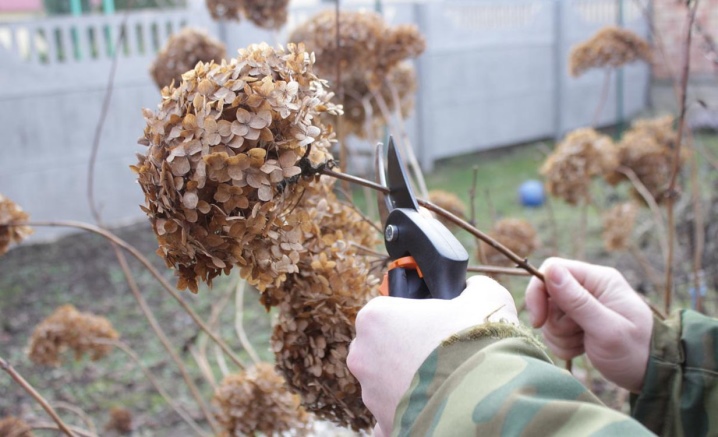
Fight disease
It is believed that the Kiushu panicle hydrangea is highly resistant to diseases, but sometimes unfavorable factors cause plant diseases. These can be weather conditions, improper feeding and other reasons.
Distinguish between non-infectious, viral, bacterial and fungal diseases of the plant.
Gray rot
Fungal disease is detected after prolonged rains and cold weather. Leaves and branches in the affected areas become brown, and tissue decay occurs in these places. On the flowers, first individual petals turn brown, then the fungus destroys the entire inflorescence. When a disease is detected, the affected areas are removed, the plant and the soil under it are sprayed 3 times with an interval of 10 days with the following preparations:
- Bordeaux liquid (1%);
- copper oxychloride (0.5%);
- Bavistin (0.07-0.1%);
- Kuprozan (0.5%);
- Captan (0.5%);
- Fundazol (0.2%).
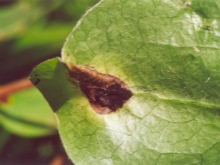
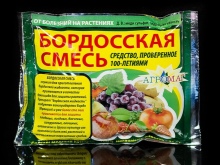

During the treatment period, fertilizing with mineral fertilizers is carried out.
White rot
Wet areas appear at the base of the branches of the plant, later on they grow a white air mushroom, destroying the tissue of the affected area. Sick shoots with inflorescences dry up. With severe lesions, the hydrangea is uprooted along with a lump of earth and burned, the site is etched with formalin. Bushes with initial signs of infection are watered 3-4 times during the growing season with means to combat plant diseases:
- Fundazol (0.2%);
- Topsin-M (0.2%);
- Zuparen (0.5%).
The rate of use of the liquid is 10 liters per 1 square meter of soil.
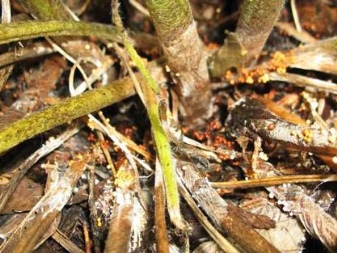
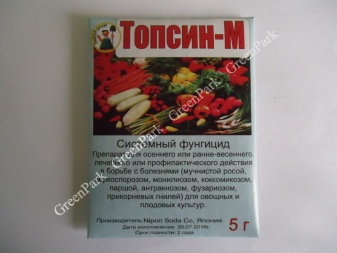
White spot
Dark spots appear on the lower leaves of the shrub, which later brighten. Gradually, the fungus infects all leaves that fall ahead of time, and passes to the stems. In autumn, fallen leaves with other plant residues are collected and burned, the soil is disinfected. In the summer, the bush is sprayed 3 times with an interval of 10 days with one of the fungicides:
- copper oxychloride (0.4-0.5%);
- Fundazol (0.2%);
- Kuprozan (0.5%);
- Ferbam (0.5%).
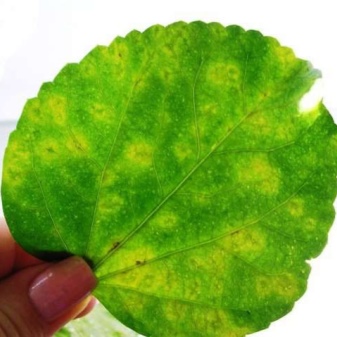
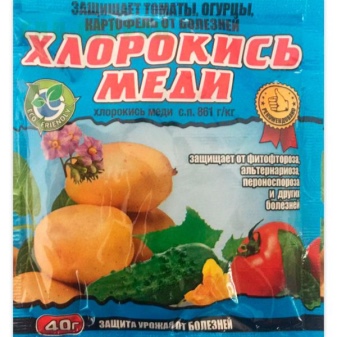
The disease is especially dangerous for young cuttings in the rooting phase.
Rust
On the surface of leaves, branches, inflorescences, brown-chocolate pustules of the fungus appear, which later form dark sporozoans with a yellow halo. Longitudinal cracks appear on the stems of hydrangea, leaves and inflorescences dry out prematurely. Small damage does not threaten the plant. Damaged areas are removed, spraying is carried out (3-4 times with an interval of 10 days) with the following means:
- Tsineb (0.5%);
- iron vitriol (3%);
- DNOC (1%);
- colloidal sulfur (0.5-0.8%).
Spraying begins from the moment the signs of the disease appear.

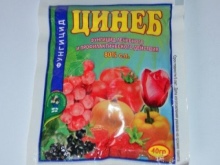
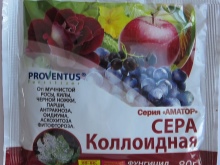
Preparing for winter
In the fall, watering the plants is stopped, and nitrogen-containing fertilizers, which enhance the growth of young shoots, are abandoned. An adult hydrangea does not need shelter for the winter. Many cut off the caps of the inflorescences so that the branches do not break off under the weight of the snow. This measure is optional. Young 2-3-year-old bushes are insulated for the winter in different ways.
- Shoots are tied in a bunch, laid on the ground and covered with spruce branches, tar paper, tree branches. The winter blanket remains behind the snow.
- The plant is spud with a mixture of soil and peat. You do not need to do this with leaves, as they do not allow moisture to pass through well and can cause root rot.
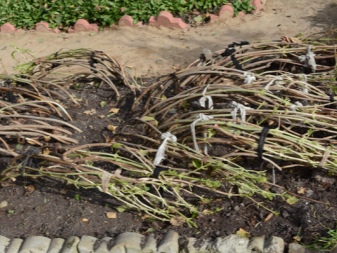
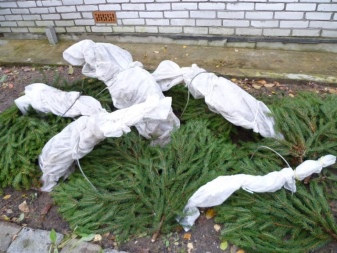
Reproduction
Hydrangea "Kiushu" is propagated by cuttings and layering.
Cuttings
At the beginning of summer, cuttings 8-10 cm long are cut from young green shoots and planted in a shaded place (under a bush, behind a building) in light soil. On hot days, cuttings are sprayed with warm water. After a month, the rooted cuttings are transplanted to a permanent place at a distance of 2 m from each other. Do not allow the soil to dry out.
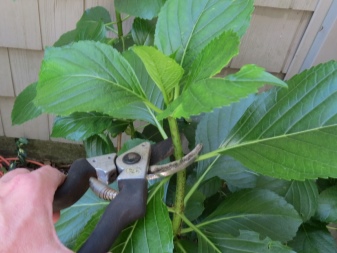
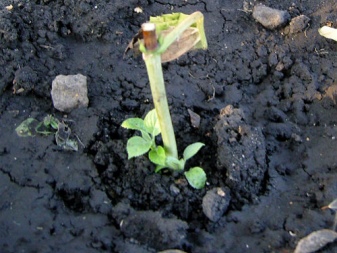
Layers
At the end of March, the lower branches of the hydrangea are fixed on the ground and sprinkled on top with fertile soil, leaving the tops. In the spring of next year, the layers are planted in a permanent place, the moisture of the earth is monitored.
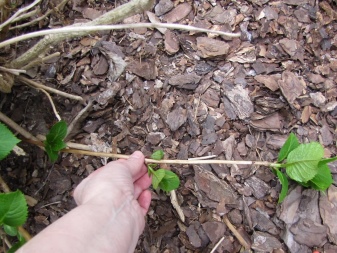

Beautiful examples of landscape design
Let's look at examples using hydrangea "Kyushu" for garden decoration:
- hydrangea against the background of thuja;
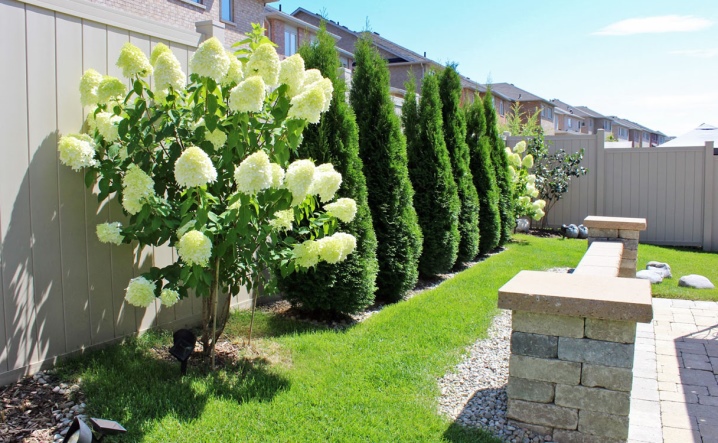
- original design of the garden;
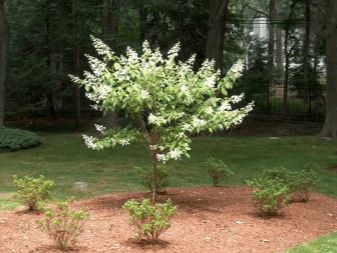
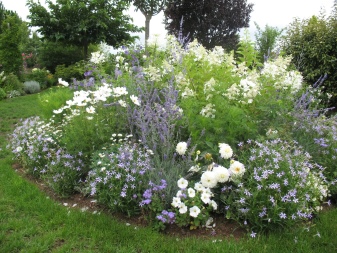
- a flowerbed with hydrangea near the house;

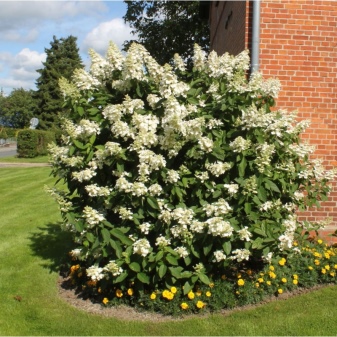
- hydrangea bushes along the curb.
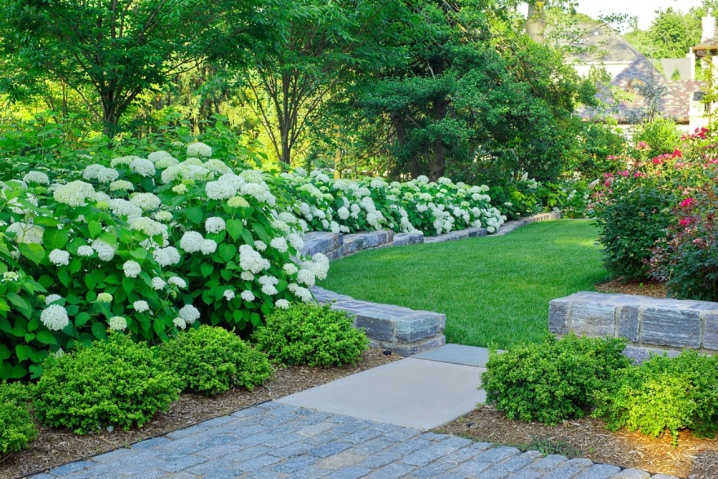
See the following video about the peculiarities of growing Kyushu hydrangea.



































































The comment was sent successfully.